Use this nursing care plan and management guide to help care for patients with urinary tract infection. Enhance your understanding of nursing assessment, interventions, goals, and nursing diagnosis, all specifically tailored to address the unique needs of individuals facing urinary tract infections.
What are Urinary Tract Infections?
Urinary tract infections (UTIs) are caused by pathogenic microorganisms in the urinary tract (kidney, bladder, urethra). UTI is defined as significant bacteriuria in the setting of symptoms of cystitis or pyelonephritis. These infections account for a significant number of emergency department (ED) visits, and 20% of women develop at least one UTI (Brusch & Stuart, 2023).
Most UTIs are caused by the bacterium Escherichia coli (E. coli), normally found in the digestive system. E.coli causes the majority of uncomplicated cystitis cases. Among the pathogens responsible for the remainder are Staphylococcus saprophyticus, Proteus mirabilis, Klebsiella pneumoniae, or Enterococcus faecalis. Usually, bacteria that enter the urinary tract system are removed by the body before they can cause symptoms. But, in some cases, bacteria overcome the natural defenses of the body, therefore causing infection. Uropathogenic bacteria, derived from a subset of fecal flora, have traits that enable adherence, growth, and resistance to host defenses. These traits facilitate colonization and infection of the urinary tract (Brusch & Stuart, 2023).
UTIs are usually classified as infections involving the upper or lower urinary tract. An infection in the urethra is called urethritis. A bladder infection is called cystitis. Bacteria may ascend to the ureters to multiply and cause infection of the kidneys (pyelonephritis). An uncomplicated UTI usually only involves the bladder. Complicated UTIs are defined as UTIs that are associated with metabolic disorders, that is secondary to anatomic or functional abnormalities that impair urinary tract drainage, or that involve unusual pathogens, which increase the risk for therapeutic failure (Brusch & Stuart, 2023).
Signs and symptoms of urinary tract infections include dysuria, urinary urgency and frequency, a sensation of bladder fullness or lower abdominal discomfort, suprapubic tenderness, flank pain and costovertebral angle tenderness, bloody urine, fever, chills, and malaise (Brusch & Stuart, 2023).
Nursing Care Plans and Management
The focus of this nursing care plan for urinary tract infections includes nursing interventions to relieve pain and discomfort, increase the client’s knowledge about the preventive measures and treatment regimen, and manage potential complications. The nurse aims to ensure that the patient receives appropriate treatment and follow-up care to address the infection and prevent future occurrences.
Nursing Problem Priorities
The following are the nursing priorities for patients with urinary tract infection (UTI):
- Pain management
- Enhancing urinary function
Nursing Assessment
Assess for the following subjective and objective data:
- Burning on urination
- Facial grimace
- Guarding behavior
- Protective decreased physical activity
- Spasms in the lower back and bladder area
- Dysuria
- Urinary frequency or urgency
- Urinary hesitancy
- Increased body temperature above the normal range
- Flushed skin; warm to the touch
- Increased respiratory rate
- Tachycardia
- Lack of questions
- Multiple questions
- Recurrent UTI
- Verbalizing inaccurate information
Assess for factors related to the cause of urinary tract infection (UTI):
- Inflammation and infection of the urinary tract (e.g., urethra, bladder, and other urinary tract structures)
- Frequent urination, urgency, and hesitancy
- Inflammation
- Infectious process
- Increased metabolic rate
- Direct effect of circulating endotoxins on the hypothalamus
- Unfamiliarity with the nature and treatment of UTI
Nursing Diagnosis
Following a thorough assessment, a nursing diagnosis is formulated to specifically address the challenges associated with urinary tract infection based on the nurse’s clinical judgment and understanding of the patient’s unique health condition. While nursing diagnoses serve as a framework for organizing care, their usefulness may vary in different clinical situations. In real-life clinical settings, it is important to note that the use of specific nursing diagnostic labels may not be as prominent or commonly utilized as other components of the care plan. It is ultimately the nurse’s clinical expertise and judgment that shape the care plan to meet the unique needs of each patient, prioritizing their health concerns and priorities.
Nursing Goals
Goals and expected outcomes may include:
- The client will use pharmacological and nonpharmacological pain relief strategies.
- The client will report satisfactory pain control at a level of less than 3 to 4 on a scale of 0 to 10.
- The client will report the absence of pain.
- The client will achieve a normal urinary elimination pattern, as evidenced by the absence of signs of urinary disorders (urgency, oliguria, dysuria).
- The client will demonstrate behavioral techniques to prevent urinary infections.
- The client will empty the bladder completely and regularly, voluntarily or by catheter, as appropriate.
- The client will maintain a core temperature within the normal range.
- The client will be free of chills and experience no associated complications.
- The client will verbalize knowledge of the causes and treatment of UTI, control risk factors, and complete medical treatment of UTI.
Nursing Interventions and Actions
Therapeutic interventions and nursing actions for patients with urinary tract infection (UTI) may include:
1. Managing Acute Pain
Because of the referred pain pathways, even simple lower UTI may be accompanied by flank pain and costovertebral angle tenderness. The lining of the bladder becomes inflamed and irritated. The irritation causes pain in the lower abdomen or pelvic area and even in the lower back. Burning or pain when urinating is one of the common symptoms of UTI (Urology Care Foundation, 2022). By employing a combination of pain medications, heat therapy, hydration, and appropriate antibiotic treatment, healthcare providers can effectively manage acute pain in patients with UTIs and support their recovery.
1. Assess the client’s description of pain, such as quality, nature, and severity of pain.
Pain associated with UTI is described as burning on urination, flank pain, and lower abdominal or suprapubic pain (Gupta et al., 2017; Lee et al., 2007). In comparison, some clients with recurrent infections are asymptomatic. Pain is a subjective sensation for which surrogate and behavioral markers must be measured. Visceral pain, such as emanating from the bladder, may be manifested as cutaneous hypersensitivity (Rosen & Klumpp, 2014). This information will help in determining the choice of intervention.
2. Assess for signs and symptoms of urinary tract infection.
Common signs and symptoms of UTI include dysuria (painful, burning sensation, or difficult urination), urinary frequency & urgency, and nocturia (voiding two or more times at bedtime). Additionally, pyuria (foul-smelling or cloudy urine) or hematuria (bloody urine) may also occur due to excess white cells in the urine and bleeding of the inflamed bladder wall (Flores-Mireles et al., 2019). Dysuria may be accompanied by a sensation of bladder fullness or lower abdominal discomfort (Brusch & Stuart, 2023).
3. Assess for risk factors for UTI.
A history of sexually transmitted infections, catheter use, and previous surgeries of the genitourinary tract are at risk of developing UTI. Blockages of the urinary tract, such as those caused by a kidney stone or an enlarged prostate, can block urine flow and increase the risk of UTI. (Storme, Saucedo, Garcia-Mora, 2019). Pathogenic bacteria ascend from the perineum and rectum, predisposing women to UTIs. Women also have shorter urethras than men, which further contributes to their increased susceptibility to UTIs (Ackerman, 2022).
4. Monitor laboratory and diagnostic studies, as indicated.
See Laboratory and Diagnostic Procedures
5. Apply a heating pad to the suprapubic area or lower back.
The application of heat to the perineum help relieve pain and spasm. The hot compress has proven to be an effective complementary treatment for myofascial pain syndrome in the upper trapezius muscle and has exhibited an extraordinary capability for regulating the pressure pain threshold and improving the quality of life (Zhu et al., 2022).
6. Encourage the client to increase oral fluid intake unless contraindicated.
Increasing fluid intake to 2 to 3 liters per day helps facilitate urine production, dilutes urine, reduces irritation of the inflamed bladder, promotes renal blood flow, and flushes bacteria from the urinary tract. A study of 140 women with recurrent UTIs showed that increased fluid intake reduces the risk of repeat infections. The intervention group was instructed to increase their water intake by an additional 1.5 liters per day, whereas the control group was instructed to continue with their usual intake. At 1 year, the intervention group had experienced 48% fewer UTIs than the control group (Brusch & Stuart, 2023).
7. Instruct to avoid coffee, tea, spices, alcohol, and sodas.
These foods are considered urinary tract irritants and may irritate the urinary system. Instruct the client to consider avoiding these irritants for about a week to see if their symptoms improve. Then gradually, every one or two days, they may add one back into their diet, noting any changes in urinary urgency or frequency (Mayo Clinic, 2022).
8. Encouraged the client to void frequently.
Frequent voiding every 2 to 3 hours to completely empty the bladder is encouraged to prevent bladder distention, lower bacterial urine counts, reduce stasis of the urine, and prevent reinfection. Frequent and complete voiding has been associated with a reduction in the incidence of UTI. Normally, a thin film of urine remains in the bladder after emptying, and any bacteria present are removed by the mucosal cell production of organic acids (Brusch & Stuart, 2023).
9. Use of non-pharmacological techniques for pain management as appropriate.
Alternative therapies such as relaxation, massage, guided imagery, or distraction may decrease pain and provide comfort. It is important to have a range of options including non-pharmacological therapies in order to manage the client’s pain more effectively. This method of pain management has great potential to relieve someone’s pain in addition to pharmacologic management, and it is simple and inexpensive compared with pharmacological methods (Jira et al., 2020).
10. Administer antibacterial agents as indicated.
Trimethoprim (TMP) or cephalexin are usually the first choices of antibiotics. Short-course therapy using a single antibiotic or a 3-day course reduces treatment costs, increases compliance to therapy, and lower the rate of side effects. Appropriate antibiotic treatment leads to significantly higher symptomatic and bacteriologic cure rates and better prevention of reinfection in women with uncomplicated cystitis. Beta-lactam antibiotics may be used when other recommended agents cannot be used. Fosfomycin and nitrofurantoin monohydrate/macrocrystals should be avoided in clients with possible early pyelonephritis. Fluoroquinolones typically are reserved for complicated cystitis (Brusch & Stuart, 2023).
11. Stress the importance of completing the antibiotic therapy
Even if the symptoms disappear, the client should finish the prescribed duration of the antibiotic therapy. Unable to do so may result in reinfection. Negative consequences of antibiotic therapy include the promotion of the development of antibiotic resistance in uropathogenic and commensal bacteria as well as adverse effects on the gut and vaginal flora. It is important to identify antimicrobial resistance patterns when considering empiric antimicrobial selection (Brusch & Stuart, 2023).
12. Administer analgesics or antispasmodics, as indicated.
Antispasmodic and analgesic agents are useful in relieving bladder irritability, spasm, and pain. Some clients may require a urinary analgesic such as oral phenazopyridine, which is useful to relieve discomfort due to severe dysuria. Phenazopyridine is compatible with antibacterial therapy and can help relieve pain and discomfort before antibacterial therapy controls infection (Brusch & Stuart, 2023).
13. Instruct the client to void immediately after sexual intercourse.
Sexually active clients may attempt voiding immediately after intercourse to lessen the risk of coitus-related introduction of bacteria into the bladder. Some authors recommend large urinary flow volumes as a measure that will reduce the risk of UTI (Brusch & Stuart, 2023).
14. Promote optimal rest and minimal physical activities.
Rest is essential for recovery in clients with pyelonephritis. Activity should be minimal. The client should not return to work for two weeks, so as to allow time for the infection to be eliminated and for the client to recover physical strength. Temper this recommendation depending on the physical condition of the client and the presence of comorbid conditions (Fulop & Batuman, 2021).
15. Instruct the client in strengthening their pelvic floor muscles as indicated.
The pelvic floor muscles open and close the tube that carries urine from the bladder to the urethra. Instruct the client to practice the Kegel exercise to strengthen these muscles. The client should squeeze their pelvic floor muscles for three seconds, then relax them for a count of three and repeat the procedure several times (Mayo Clinic, 2022).
2. Promoting Effective Urinary Elimination
Assisting clients with elimination is an essential aspect of the nurse’s role and has important medical significance as well as psychosocial effects on the client’s quality of life. Elimination issues may occur due to a variety of different medical conditions such as UTIs (Sharma & Bhutta, 2022). The most frequent chief complaint related to UTI is dysuria. In fact, complaints of dysuria, urinary frequency, and urgency are approximately 75% predictive of UTI. whereas acute hesitancy, urinary dribbling, and slow stream are approximately 33% predictive of it (Brusch & Stuart, 2020). By promoting effective urinary elimination through appropriate hydration, regular voiding, hygiene practices, and targeted interventions, healthcare providers can support patients with UTIs in their recovery process.
1. Assess the client’s pattern of elimination.
This can help determine the factors that may predispose the client to UTI and serves as a basis for determining appropriate interventions. Assessment and physical exam may include asking the client about the presence of symptoms such as frequency, urgency, dysuria, and nocturia; determining if there is a pain in the area of the bladder; determining the characteristics of the urine; noting color, cloudiness, and if there is a malodorous smell; and determining the pattern of urination and amount (how much and how often?).
2. Note the client’s age and gender.
UTI is more prevalent in women than in men at younger ages, although the gap narrows in later life. About one out of every five women will develop a UTI during their lifetime. Older adults are also prone to developing UTIs caused by incomplete bladder emptying due to structural abnormalities and decreased bladder tone. Males who present with genitourinary complaints warrant a thorough general physical examination, with particular attention to the vital signs, kidneys, bladder, prostate, and external genitalia (Brusch & Stuart, 2020).
3. Palpate the bladder for distention and observe for overflow.
Bladder dysfunction is variable but may include the loss of bladder contraction and the inability to relax the urinary sphincter, resulting in urine retention and reflux incontinence. This can precipitate autonomic dysreflexia.
4. Instruct the female client to wipe from front to back.
This technique helps prevent bacteria in the anal region from spreading to the vagina and, ultimately, the urethra. Proper perineal care helps in minimizing the risk of contamination and reinfection. After urination, the woman should wipe from front to back, not from the anal area forward, which seems to drag pathogenic organisms nearer to the urethra (Ackerman, 2022).
5. Encourage drinking cranberry juice.
Daily intake of cranberry juice (about 8 to 10 oz) helps prevent and control symptoms of UTI. It has been shown to reduce the adherence of bacteria to the uroepithelial cells in the urinary tract. Drinking cranberry juice or taking cranberry tablets may offer some benefit in reducing recurrent UTIs and does not appear to be harmful. The positive effect appears mainly in women with recurrent UTIs (Brusch & Stuart, 2023).
6. Limit the use of indwelling bladder catheters to manage incontinence.
Catheter use dramatically increases the risk of UTI. The risk for catheter-associated urinary tract infection (CAUTI) increases with each day a urinary catheter is placed. Alternative measures such as regular toileting can prevent infection. If an indwelling catheter is necessary, follow strict interventions to prevent infection and urosepsis. Eighty percent of nosocomial UTIs are related to urethral catheterization, whereas 5% to 10% are related to genitourinary manipulation. Catheters inoculate organisms into the bladder and promote colonization by providing a surface for bacterial adhesion and causing mucosal irritation (Brusch & Stuart, 2023).
7. Promote increased oral fluid intake.
Hydration to accentuate unidirectional clearance of bacteriuria is recommended, especially if an obstruction was relieved recently (Brusch & Stuart, 2023). A randomized controlled trial showed statistically significant effects of increased fluid intake for UTI conducted in healthy premenopausal women cared for in primary care clinics (Brusch & Stuart, 2023).
8. Educate menopausal clients about the benefits of estrogen replacement.
Menopausal women appear to benefit from estrogen replacement administered systematically or applied locally. A randomized, double-blind, placebo-controlled trial in 93 postmenopausal women documented that estriol vaginal cream significantly lowered the frequency of recurrent UTI, probably because of its ability to restore the premenopausal flora of lactobacilli. This, in turn, suppresses gram-negative flora by decreasing the vaginal pH (Brusch & Stuart, 2023).
9. Instruct the client with bladder training as indicated.
Bladder training or retraining involves adjusting the client’s elimination habits. The client urinates according to a set schedule, even if there is no urge to urinate, then gradually increases the time between urination. This allows the bladder to fill more fully and gives the client more control over the urge to urinate (Mayo Clinic, 2022).
10. Provide instructions on how to perform the Kegel exercise.
The pelvic floor muscles and urinary sphincter help control urination. These muscles can be strengthened by doing pelvic floor exercises regularly, commonly referred to as the Kegel exercises. The client squeezes their pelvic floor muscles for three seconds, then relaxes them for another three seconds. This procedure is done repeatedly or three to four times a day while sitting, lying, or standing (Mayo Clinic, 2022).
11. Encourage the client to explore the benefits of biofeedback and vaginal weights.
Biofeedback can help train the pelvic floor muscles. Sensors placed near the muscles transmit exertion levels to a computer, which displays the levels on the screen. Biofeedback is done with a professional or with a home device. Cone-shaped vaginal weights are another option to help with Kegel exercise. The client places weight in the vagina and contracts the pelvic floor muscles to keep it from falling out (Mayo Clinic, 2022).
12. Promote effective perineal care.
Instruct the client to avoid baths in favor of showers. A gentle, liquid soap without fragrance should be used in bathing, or a liquid baby soap (or baby shampoo, which is very acceptable for the vagina). The soap should be applied using a clean, soft cotton or microfiber washcloth. The vaginal area should be cleaned first to avoid unnecessary contamination of the periurethral area with germs or bacteria (Ackerman, 2022).
3. Managing Fever and Hyperthermia
Elevated core temperature is a common finding in intensive care, affecting up to 70% of clients. Despite the general usage of the terms ‘pyrexia’, ‘fever’, and ‘hyperthermia’, they are not yet universally defined. The American College of Critical Care Medicine, the International Statistical Classification of Diseases, and the Infectious Diseases Society of America define fever as a core temperature of 38.3℃ or higher, just above the upper limit of a normal human temperature, irrespective of the cause. Hyperthermia above 40℃ appears to carry a high mortality, therefore, early recognition and an understanding of the pathophysiology will be essential (Walter et al., 2016). Managing fever and hyperthermia in patients with urinary tract infection (UTI) is essential to alleviate discomfort and prevent complications.
1. Assess for signs of increased body temperature.
Increased body temperature will show various symptoms such as sweating, shivering, headache, warm skin, and body malaise. A temperature of 38.9℃ to 41.1℃ suggests an acute infectious disease process. The client may appear uncomfortable but not toxic. The presence of toxic fever and chills suggest pyelonephritis rather than cystitis (Brusch & Stuart, 2023). Visit Hyperthermia nursing diagnosis for more comprehensive nursing interventions.
2. Monitor vital signs, especially temperature, as indicated.
This is to determine appropriate interventions. The nurse may appreciate signs of dehydration such as tachycardia. Clients with pyelonephritis appear ill and may have hypotension. The nurse should note, however, that 30 to 50% of pyelonephritis cases may be silent, without clinical symptoms (Brusch & Stuart, 2020).
3. Monitor environmental temperature.
Room temperature and linens should be altered to maintain near-normal body temperature. Temperature above 40 degrees can cause tachycardia with a strong pulse, even delirium, convulsions, and coma (Balli et al., 2022).
4. Provide a tepid sponge bath.
A tepid sponge bath is done to reduce fever. A tepid sponge compress is a warm compress technique that combines a block compression technique on superficial vessels with the wiping process. Providing a tepid sponge bath allows the circulation of moist air to help release body heat using convection (Lismayanti et al., 2020).
5. Encourage adequate fluid intake.
This is to prevent the occurrence of dehydration precipitated by an increase in temperature. A study of 140 women with recurrent UTIs showed that increased fluid intake reduces the risk of repeat infections. The only fluid involved in the study was water, although other fluids would probably provide similar results, and the benefits would probably also apply to post-menopausal women (Brusch & Stuart, 2023).
6. Encourage the use of a hypothermia blanket and wrap extremities with bath towels.
It helps prevent shivering. A study observed that both external cooling blankets and antipyretic medications significantly reduce body temperature, but cautioned against the use of external cooling due to increased energy expenditure. On the other hand, another study showed an association between external cooling with reduced energy expenditure and reduced body temperature (Chen et al., 2021).
7. Maintain bed rest.
This is to reduce metabolic demands/oxygen consumption. Bedrest and avoiding certain activities may be beneficial in clients with prostatitis. For clients with chronic, non-inflammatory, abacterial prostatitis, bed rest for 2 weeks has been advocated (Brusch & Stuart, 2020).
8. Administer antipyretic drugs as indicated.
Fevers are typically managed with antipyretics, which work by inhibiting the enzyme cyclooxygenase (COX), thereby reducing the PGE2 within the hypothalamus. Other mechanisms of antipyretics have been suggested, which include a reduction in proinflammatory mediators and enhancement of anti-inflammatory signals at the site of injury. Over-the-counter antipyretics include acetaminophen and NSAIDs such as aspirin, naproxen, and ibuprofen (Balli et al., 2022).
9. Close windows and doors to prevent air drafts in the room.
Convection is the process of transfer of heat from the body surface to the surrounding air via air current. Therefore, the client should be relocated away from draughts and the windows and doors closed to prevent chills or shivering. Curtain blinds may also serve as protection against cold air from the windows (The Royal Children’s Hospital Melbourne, 2019).
4. Initiating Health Teachings and Patient Education
UTIs are the most commonly seen bacterial infection in general practice. Three-quarters of women will have a UTI in their lifetime, with E.coli being the causative pathogen in 70 to 95% of cases. Suboptimal diagnosis and management may contribute to treatment failure that may lead to upper UTI and in some cases a bloodstream infection (Lecky et al., 2020). UTI is a preventable disease. It can be prevented if appropriate preventive measures are adopted while providing care to the client. Appropriate client education is necessary to help the client understand the process and follow an effective treatment plan to prevent UTI (Khanal, 2014). Initiating health teachings and patient education in patients with urinary tract infection (UTI) is important to promote awareness, empower individuals in managing their condition, and prevent future occurrences. Healthcare providers should provide comprehensive information about the causes, symptoms, and risk factors of UTIs.
1. Assess the client’s or family caregiver’s knowledge about UTI and its symptoms.
People must know about the definition, risk factors, signs and symptoms, and preventive measures of UTI. If people have adequate knowledge, then they can use their knowledge to prevent catheter-related UTIs. A study found that no one of the caregivers had adequate knowledge about the definition, risk factors, signs and symptoms, complications, and preventive measures of UTI (Khanal, 2014).
2. Assess treatment expectations and the ability for adherence.
In a study, most healthcare providers reported that women expected antibiotic therapy for their UTIs. Some stated that their prescribing behavior is influenced by the client. Clients’ antibiotic prescribing expectations were varied; while women wanted treatment for the pain, they did not necessarily want a quick fix that might not be the best for them. The client’s needs centered on advice on symptom duration and pain and discomfort management (Lecky et al., 2020).
3. Assess for barriers to adherence and the relationship between the healthcare team and the client or the client’s family.
Barriers to effective joint consultation and appropriate prescribing include the lack of provider time, misunderstanding of depth of knowledge between the healthcare provider and client, miscommunication between the client and the healthcare team, the nature of consults, a history of previous antibiotic therapy, and the lack of a succinct, up-to-date summary of evidence-based implications for the management (Lecky et al., 2020).
4. Explain to the client about UTI risk factors, prevention, and treatment.
Frequent recurrences of UTI may indicate that the client has difficulty understanding the disease and complying with prescribed therapeutic management. Proper adherence to the outpatient medical regimen should be stressed. Behavior modification, such as good oral fluid intake to enhance diuresis and frequent voiding may be helpful in reducing recurrent infections (Brusch & Stuart, 2023).
5. Educate the client about hygienic measures (showering rather than bathing in a tub).
Bacteria in the bath water may enter the urethra. Baths should be avoided in favor of showers. Women have shorter urethras than men, which further contributes to their increased susceptibility to UTIs. A short urethra makes it easier for the uropathogen to invade the urinary tract, especially when a client takes frequent baths and long periods of soaking in the bath water (Ackerman, 2022).
6. Encourage the client not to ignore the need to void.
This can result in the stasis of urine. Urine is an ideal medium for bacterial growth. Factors that make it less favorable for bacterial growth include a pH of less than 5, the presence of organic acids, and high urea levels. Frequent urination and high urinary volumes are also known to decrease the risk of UTIs (Ackerman, 2022).
7. Promote adequate perineal hygiene after a bowel movement.
This will help in preventing the migration of the pathogen in the urethral opening and, in women, the vaginal opening. After urination, women should wipe from front to back, not from the anal area forward, which seems to drag pathogenic organisms nearer to the urethra. Vigorous urine flow is helpful in prevention. A gent;e, liquid soap without fragrance should be used in bathing, or a liquid baby soap (or baby shampoo, which is very acceptable for the vagina). The soap should be applied using a clean, soft cotton or microfiber washcloth. The vaginal area should be cleaned first to avoid unnecessary contamination of the periurethral area with germs or bacteria (Ackerman, 2022).
8. Enforce the importance of frequent bladder emptying.
Completely emptying the bladder prevents bladder distention and compromised blood supply to the bladder wall. These predispose the client to UTI. When bacteria invade the bladder mucosal wall, an inflammatory reaction called cystitis is produced. The majority of organisms causing UTI are enteric coliforms that typically inhabit the periurethral vaginal introitus. These organisms ascend the urethra into the bladder and cause UTIs. People who frequently void and empty the bladder tend to have a lower risk of a UTI (Ackerman, 2022).
9. Promote the use of tampons for periods.
Tampons are advised during menstruation rather than sanitary napkins because they keep the bladder opening area drier, hence limiting the growth of bacteria. The probiotic administration in hygiene products, such as tampons, has emerged as a new possibility to carry beneficial strains and exert the claimed effect. The pharmacological aspects of probiotic products for feminine hygiene including sanitary towels and tampons. They could reduce the risk associated with toxic shock syndrome produced by Staphylococcus aureus strains, with a higher incidence in women who use tampons. However, the availability of everyday feminine hygiene products containing probiotic microorganisms of vaginal origin is limited in the market and available only in some regions of the world (Nader-Macias et al., 2021).
10. Instruct the client to avoid wearing tight-fitting or constricting undergarments made of non-breathing materials.
Such fabrics can accumulate moisture and can provide an environment for bacterial growth. Cotton fabric and loose-fitting clothing are more encouraged. It is important to maintain good personal hygiene and change underwear daily, avoiding tight-fitting garments including pantyhose and tights. However, though theoretically, these interventions make sense, the actual evidence for these is lacking but the lack of harm in their suggestion means they are often quoted by healthcare providers (Foley & Yang, 2019).
11. Provide leaflets that contain information about UTIs.
UTI information leaflets for uncomplicated UTIs were designed to be shared during the consultation and taken home by the client for future reference. When used this way, the leaflet aims to facilitate a dialogue between the healthcare team and the client, covering areas of misunderstanding and shared decisions about management (Lecky et al., 2020).
12. Enforce the importance of increased oral fluid intake.
It is telling that perhaps one of the commonest advice given to women to prevent UTIs is to increase fluid intake. The concept is that if the unidirectional flow of urine and reduced retrograde migration of bacteria occurs, then the risk of UTI will reduce. However, the nurse should be aware that overhydration may result in the worsening of some overactive lower urinary tract symptoms in women (Bergamin & Kiosoglous, 2017).
13. Educate the client about the importance of maintaining healthy sexual hygiene.
In one large case-control study, the analysis revealed that the frequency of sexual intercourse in young women is the strongest risk factor for UTIs. Other risk factors included spermicide use, a new sex partner in the past 12 months, a UTI before the age of 15, and having a mother with a history of UTIs (Bergamin & Kiosoglous, 2017). Sexually active women may attempt voiding immediately after intercourse to lessen the risk of coitus-related introduction of bacteria into the bladder (Brusch & Stuart, 2023).
14. Caution the client in using spermicides and diaphragms.
The use of diaphragms and spermicides has also been shown to be an independent risk factor for UTIs. The likely cause of this is either due to the diaphragm changing the bladder’s ability to void; therefore, preventing complete bladder emptying, or the insertion of the device facilitating the entry and colonization of bacteria within the urinary tract. Furthermore, the diaphragm and spermicide may alter the vaginal flora and microenvironment, weakening the commensal acidic defense against uropathogens (Foley & Yang, 2019).
15. Encourage the client to maintain a healthy weight.
Clinically obese clients (BMI over 30) appear to be at higher risk of UTIs than non-obese clients in one study. However, it is difficult to ascertain the cause-and-effect relationship between the two. However, the well-established benefits of weight loss in obese clients mean that this is a lifestyle modification that providers and nurses should already be actively encouraging (Foley & Yang, 2019).
5. Administering Medications and Pharmacologic Support
Administering medications and pharmacologic support is an important aspect of managing urinary tract infections (UTIs) in patients. The primary treatment for UTIs is antibiotic therapy, which is aimed at targeting the underlying bacterial infection. Healthcare providers should prescribe appropriate antibiotics based on the specific bacteria causing the infection and any relevant resistance patterns. It is crucial to educate patients about the importance of adhering to the prescribed medication regimen, including completing the full course of antibiotics, to ensure the eradication of the infection and prevent antibiotic resistance. In addition to antibiotics, healthcare providers may recommend pharmacologic support to alleviate symptoms such as pain and discomfort. This may include prescribing analgesics, such as nonsteroidal anti-inflammatory drugs (NSAIDs) or urinary analgesics, to relieve pain and reduce inflammation in the urinary tract.
Here is a list of commonly prescribed medications for urinary tract infections (UTIs) and their uses:
1. Antibiotics
These medications are used to treat the underlying bacterial infection causing the UTI. Commonly prescribed antibiotics for UTIs include:
- Trimethoprim/sulfamethoxazole (Bactrim, Septra)
- Nitrofurantoin (Macrodantin, Macrobid)
- Ciprofloxacin (Cipro)
- Levofloxacin (Levaquin)
- Amoxicillin/clavulanate (Augmentin)
2. Analgesics
These medications are used to relieve pain and discomfort associated with UTIs. Commonly prescribed analgesics include:
- Phenazopyridine (Pyridium, Azo Standard): Provides relief from urinary pain, burning, and urgency. It is important to note that this medication only provides symptomatic relief and does not treat the underlying infection.
3. Nonsteroidal Anti-Inflammatory Drugs (NSAIDs)
These medications are used to reduce pain, inflammation, and fever associated with UTIs. Commonly prescribed NSAIDs include:
6. Assessing and Monitoring for Potential Complications
Assessing and monitoring for potential complications in patients with urinary tract infection (UTI) is of paramount importance for several reasons. Firstly, UTIs can sometimes progress and lead to more severe infections, such as kidney infections or bloodstream infections. By actively assessing and monitoring patients, healthcare providers can identify early signs of complications and initiate appropriate interventions promptly, preventing the worsening of the infection and reducing the risk of serious consequences. Secondly, some individuals, such as pregnant women, older adults, and those with compromised immune systems, are more susceptible to developing complications from UTIs. Regular assessment and monitoring in these vulnerable populations help detect any deviations from the expected course of the infection and allow for tailored management strategies.
1. Monitor patient’s vital signs regularly.
Monitoring the patient’s vital signs, including temperature, blood pressure, heart rate, and respiratory rate, helps detect any signs of systemic infection or deterioration. Elevated temperature, increased heart rate, and low blood pressure may indicate the presence of a severe infection or sepsis, requiring immediate intervention.
2. Assess patient for specific symptoms.
Assessing the patient for specific symptoms such as severe pain, worsening urinary symptoms, or flank tenderness can help identify potential complications like kidney infection or pyelonephritis. Prompt recognition of these symptoms allows for timely treatment and prevention of further complications.
3. Monitor urine characteristics of the patient.
Regularly monitoring urine color, clarity, and volume helps identify any changes that may indicate worsening infection or urinary complications. Cloudy or foul-smelling urine, presence of blood, or decreased urine output may indicate complications such as a worsening infection or urinary obstruction.
4. Assess patient’s renal function.
Monitoring renal function through laboratory tests, such as blood urea nitrogen (BUN) and creatinine levels, helps assess kidney function and identify any impairment or acute kidney injury. Abnormal results can indicate the severity of the infection and guide appropriate interventions.
5. Monitor patient’s intake and output.
Monitoring the patient’s fluid intake and output helps evaluate their hydration status and assess the effectiveness of treatment. Monitoring urine output, as well as assessing for signs of dehydration or fluid overload, is crucial in managing potential complications and ensuring optimal fluid balance.
6. Monitor patient’s laboratory studies regularly.
Regularly ordering and monitoring laboratory tests such as complete blood count (CBC) can provide valuable information about the severity of the infection and the patient’s overall health status. Abnormalities in white blood cell count or other blood parameters may indicate an ongoing infection or potential complications.
7. Encourage the patient to drink an adequate amount of fluids.
Hydration helps flush out the bacteria from the urinary tract. It helps dilute the urine and promotes frequent urination, which aids in eliminating bacteria and preventing further infection.
8. Administer antibiotics as prescribed.
Ensure that the patient receives the prescribed antibiotics and adhere to the recommended dosage and schedule. Antibiotics are crucial in treating the underlying infection and preventing its progression or recurrence.
9. Provide pain relief.
Administer prescribed analgesics or recommend non-pharmacological pain relief measures, such as heat therapy or relaxation techniques, to alleviate discomfort and improve the patient’s comfort level.
10. Educate on proper hygiene practices.
Instruct the patient on proper hygiene practices, including wiping from front to back after using the toilet and maintaining good perineal hygiene. These practices help prevent the spread of bacteria from the anal area to the urinary tract.
11. Encourage complete voiding.
Emphasize the importance of emptying the bladder fully during each trip to the bathroom to prevent urinary stasis and reduce the risk of reinfection. Instruct the patient to take their time when urinating and avoid rushing.
12. Promote rest and adequate sleep.
Encourage the patient to get sufficient rest and sleep to support the body’s immune system and aid in the healing process. Rest promotes overall well-being and allows the body to focus on fighting the infection.
13. Provide emotional support.
Offer emotional support and reassurance to the patient, as a UTI can be uncomfortable and distressing. Address any concerns or questions the patient may have and provide a caring and empathetic environment.
14. Educate on prevention strategies.
Teach the patient about preventive measures to avoid future UTIs, such as proper hygiene practices, regular voiding, adequate hydration, and urinating before and after sexual intercourse. Education empowers the patient to take an active role in preventing future infections.
7. Monitoring Laboratory and Diagnostic Procedures
Monitoring laboratory and diagnostic procedures in patients with urinary tract infection (UTI) is essential for accurate diagnosis, assessment of treatment response, and overall management of the condition. Healthcare providers may order various tests to aid in the evaluation of UTIs. Regular monitoring of laboratory and diagnostic results allows healthcare providers to make informed decisions regarding treatment adjustments, assess the effectiveness of prescribed medications, and ensure optimal care for patients with UTIs.
1. WBC count
Increased WBC count is a systemic response to infection. However, the WBC count may or may not be elevated in clients with uncomplicated UTI. It is usually elevated in clients with complicated UTIs. Significant leukopenia in hosts who are older or immunocompromised may be an ominous finding (Brusch & Stuart, 2023).
2. Urinalysis
This assesses for pyuria, bacteria, and blood cells in urine that is associated with the inflammation process during infection. Pyuria is a sensitive but nonspecific sign of UTI. White cell casts may be observed in conditions other than infection and may not be present in all cases of pyelonephritis. Proteinuria commonly is observed in infections of the urinary tract, but it is usually low-grade (Brusch & Stuart, 2023). A colony count of greater than 100,000 CFU/mL of urine during a clean-catch midstream or catheterized specimen indicates infection, although lower counts may also indicate UTI.
3. Urine culture and sensitivity
This is used to identify the infecting organism and to determine the most effective and suitable antibiotic. Additionally, a test for sexually transmitted infections is performed if acute urethritis is suspected. Urine culture remains the criterion standard for the diagnosis of UTI. An uncomplicated UTI does not require a urine culture unless the client has experienced a failure of empiric therapy. Obtain a urine culture in clients suspected of having an upper UTI or a complicated UTI (Brusch & Stuart, 2023).
4. Computed tomography (CT scan)
This is used for detecting renal calculi, pyelonephritis, and abscess. Noncontrast helical CT scanning is the preferred diagnostic test for obstructive nephrolithiasis. CT scanning with contrast is the imaging study of choice, offering excellent information about the renal parenchyma and the collecting system (Brusch & Stuart, 2023).
5. Ultrasound and kidney scans
These are used for detecting obstruction, abscesses, tumors, and cysts. Measurement of the postvoid residual by bladder scan or ultrasonography should be performed on every client admitted to the hospital for UTI. Its use may minimize the need for Foley catheter insertion (Brusch & Stuart, 2023).
Recommended Resources
Recommended nursing diagnosis and nursing care plan books and resources.
Disclosure: Included below are affiliate links from Amazon at no additional cost from you. We may earn a small commission from your purchase. For more information, check out our privacy policy.
Ackley and Ladwig’s Nursing Diagnosis Handbook: An Evidence-Based Guide to Planning Care
We love this book because of its evidence-based approach to nursing interventions. This care plan handbook uses an easy, three-step system to guide you through client assessment, nursing diagnosis, and care planning. Includes step-by-step instructions showing how to implement care and evaluate outcomes, and help you build skills in diagnostic reasoning and critical thinking.

Nursing Care Plans – Nursing Diagnosis & Intervention (10th Edition)
Includes over two hundred care plans that reflect the most recent evidence-based guidelines. New to this edition are ICNP diagnoses, care plans on LGBTQ health issues, and on electrolytes and acid-base balance.

Nurse’s Pocket Guide: Diagnoses, Prioritized Interventions, and Rationales
Quick-reference tool includes all you need to identify the correct diagnoses for efficient patient care planning. The sixteenth edition includes the most recent nursing diagnoses and interventions and an alphabetized listing of nursing diagnoses covering more than 400 disorders.

Nursing Diagnosis Manual: Planning, Individualizing, and Documenting Client Care
Identify interventions to plan, individualize, and document care for more than 800 diseases and disorders. Only in the Nursing Diagnosis Manual will you find for each diagnosis subjectively and objectively – sample clinical applications, prioritized action/interventions with rationales – a documentation section, and much more!

All-in-One Nursing Care Planning Resource – E-Book: Medical-Surgical, Pediatric, Maternity, and Psychiatric-Mental Health
Includes over 100 care plans for medical-surgical, maternity/OB, pediatrics, and psychiatric and mental health. Interprofessional “patient problems” focus familiarizes you with how to speak to patients.

See also
Other recommended site resources for this nursing care plan:
- Nursing Care Plans (NCP): Ultimate Guide and Database MUST READ!
Over 150+ nursing care plans for different diseases and conditions. Includes our easy-to-follow guide on how to create nursing care plans from scratch. - Nursing Diagnosis Guide and List: All You Need to Know to Master Diagnosing
Our comprehensive guide on how to create and write diagnostic labels. Includes detailed nursing care plan guides for common nursing diagnostic labels.
Other care plans and nursing diagnoses related to reproductive and urinary system disorders:
- Acute Glomerulonephritis | 4 Care Plans
- Acute Renal Failure | 6 Care Plans
- Benign Prostatic Hyperplasia (BPH) | 5 Care Plans
- Chronic Renal Failure | 10 Care Plans
- Hemodialysis | 3 Care Plans
- Hysterectomy (TAHBSO) | 6 Care Plans
- Mastectomy | 15 Care Plans
- Menopause | 6 Care Plans
- Nephrotic Syndrome | 5 Care Plans
- Peritoneal Dialysis | 6 Care Plans
- Prostatectomy | 6 Care Plans
- Urolithiasis (Renal Calculi) | 4 Care Plans
- Urinary Tract Infection | 4 Care Plans
- Vesicoureteral Reflux (VUR) | 5 Care Plans
References and Sources
The following are the references and recommended sources for Urinary Tract Infection nursing care plans and nursing diagnosis, including interesting resources to further your reading about the topic:
- Ackerman, L. (2022, November 28). Urinary Tract Infection – StatPearls. NCBI. Retrieved March 21, 2023.
- Balli, S., Shumway, K. R., & Sharan, S. (2022, September 11). Physiology, Fever – StatPearls. NCBI. Retrieved March 21, 2023.
- Bergamin, P. A., & Kiosoglous, A. J. (2017, July). Non-surgical management of recurrent urinary tract infections in women. Translational Andrology and Urology, 6.
- Brusch, J. L., & Stuart, M. (2020, January 2). Urinary Tract Infection (UTI) in Males: Practice Essentials, Background, Anatomy. Medscape Reference. Retrieved March 21, 2023.
- Brusch, J. L., & Stuart, M. (2023, January 26). Urinary Tract Infection (UTI) and Cystitis (Bladder Infection) in Females: Practice Essentials, Background, Pathophysiology. Medscape Reference. Retrieved March 21, 2023.
- Brusch, J. L., & Stuart, M. (2023, February 10). Prevention of Urinary Tract Infection (UTI): Overview, Behavioral Approaches, Self-Initiated Antibiotic Therapy. Medscape Reference. Retrieved March 21, 2023, from
- Chen, T., Malhotra, P., Khameraj, A., Ong-Bello, N., Rasul, R., & Farber, B. F. (2021, December). Cooling Blankets in Hospitalized Patients: Time to Reevaluate. The American Journal of the Medical Sciences, 362(6).
- Flores-Mireles, A., Hreha, T. N., & Hunstad, D. A. (2019). Pathophysiology, treatment, and prevention of catheter-associated urinary tract infection. Topics in spinal cord injury rehabilitation, 25(3), 228-240.
- Foley, S., & Yang, B. (Eds.). (2019). Female Urinary Tract Infections in Clinical Practice. Springer International Publishing.
- Fulop, T., & Batuman, V. (2021, July 1). Acute Pyelonephritis: Practice Essentials, Background, Pathophysiology. Medscape Reference. Retrieved March 21, 2023.
- Gupta, K., Grigoryan, L., & Trautner, B. (2017). Urinary tract infection. Annals of internal medicine, 167(7), ITC49-ITC64.
- Jira, L., Weyessa, N., Mulatu, S., & Alemayehu, A. (2020, November). Knowledge and Attitude Towards Non-Pharmacological Pain Management and Associated Factors Among Nurses Working in Benishangul Gumuz Regional State Hospitals in Western Ethiopia, 2018. Journal of Pain Research, 13.
- Khanal, N. (2014). Knowledge and practice among the caretakers of bedridden patients on prevention of urinary tract infection. Journal of Universal College of Medical Sciences, 2(1).
- Lecky, D. M., Howdle, J., Butler, C. C., & McNulty, C. A. (2020). Optimising management of UTIs in primary care: a qualitative study of patient and GP perspectives to inform the development of an evidence-based, shared decision-making resource. British Journal of General Practice, 70(694).
- Lee, J. B., & Neild, G. H. (2007). Urinary tract infection. Medicine, 35(8), 423-428.
- Lismayanti, L., Malik, A. A., Padilah, N. S., Firdaus, F. A., & Setiawan, H. (2020, June). Warm Compress on Lowering Body Temperature Among Hyperthermia Patients: A Literature Review. International Journal Of Nursing and Health Services, 4(3).
- Mayo Clinic. (2022). Bladder control: Lifestyle strategies ease problems. Mayo Clinic. Retrieved March 21, 2023.
- Nader-Macias, M. E. F., de Gregorio, P. R., & Silva, J. A. (2021, October). Probiotic lactobacilli in formulas and hygiene products for the health of the urogenital tract. Pharmacology Research & Perspectives, 9(5).
- Rosen, J. M., & Klumpp, D. J. (2014). MECHANISMS OF PAIN FROM URINARY TRACT INFECTION. NCBI. Retrieved March 21, 2023.
- The Royal Children’s Hospital Melbourne. (2019, August). Clinical Guidelines (Nursing) : Temperature management. The Royal Children’s Hospital. Retrieved March 22, 2023.
- Sharma, P., & Bhutta, B. S. (2022, May 8). Assisting Patients With Elimination – StatPearls. NCBI. Retrieved March 21, 2023.
- Storme, O., Tiran Saucedo, J., Garcia-Mora, A., Dehesa-Dávila, M., & Naber, K. G. (2019). Risk factors and predisposing conditions for urinary tract infection. Therapeutic advances in urology, 11, 1756287218814382.
- Urology Care Foundation. (2022, November). Urinary Tract Infection(UTI): Symptoms, Diagnosis & Treatment. Urology Care Foundation. Retrieved March 21, 2023.
- Walter, E. J., Hanna-Jumma, S., Carraretto, M., & Forni, L. (2016). The pathophysiological basis and consequences of fever. Critical Care, 20.
- Zhu, Y., Wang, F., Zhou, J., Gu, S., Gong, L., Lin, Y., Hu, X., Wang, W., Zhang, A., Ma, D., Hu, C., Wu, Y., Guo, L., Chen, L., Cen, L., He, Y., & Cai, Y. (2022, May 23). Effect of Acupoint Hot Compress on Postpartum Urinary Retention After Vaginal Delivery: A Randomized Clinical Trial. NCBI. Retrieved March 21, 2023.
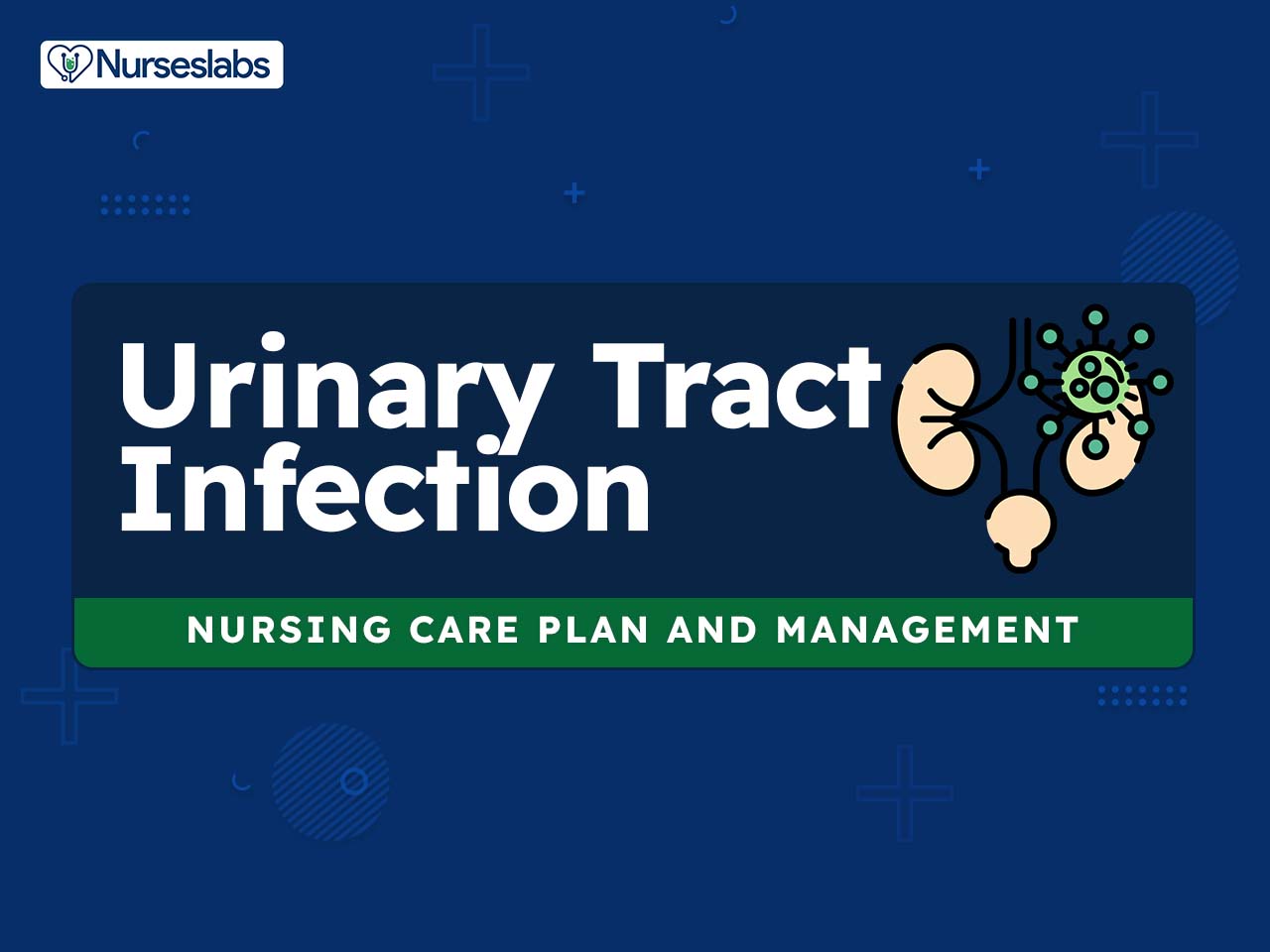



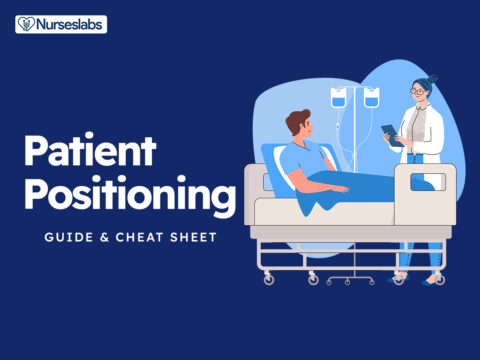



















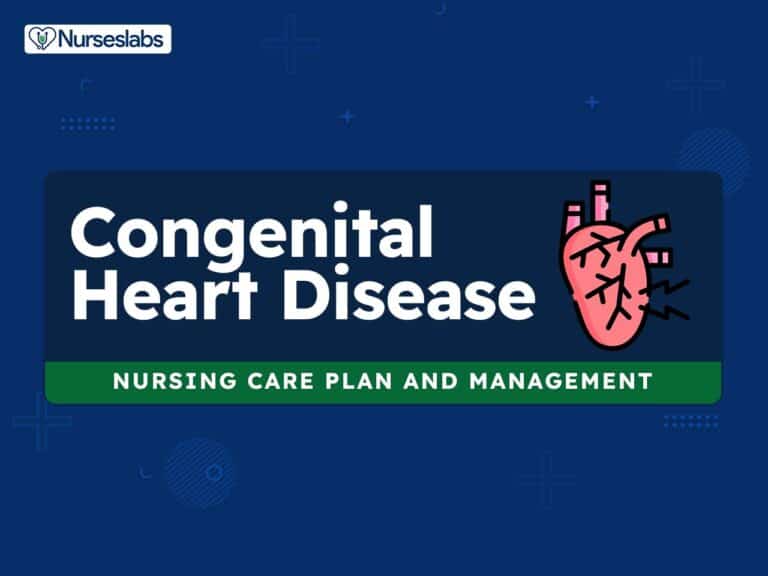


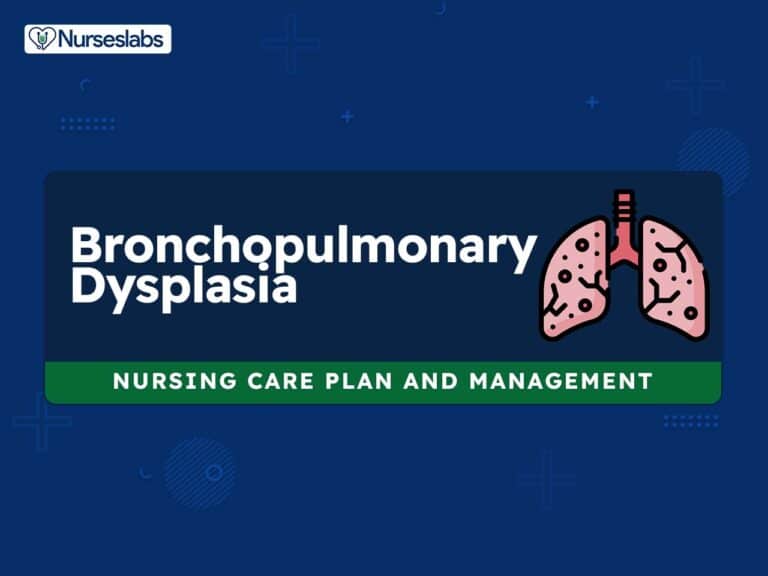
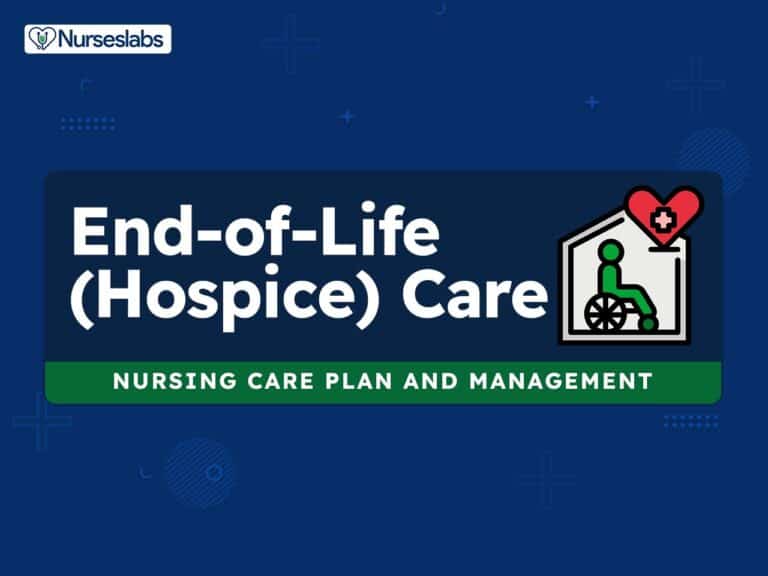
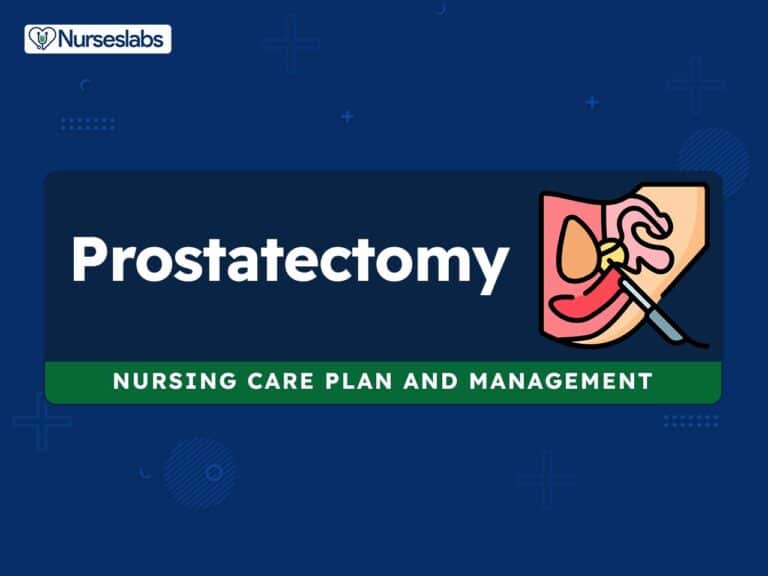
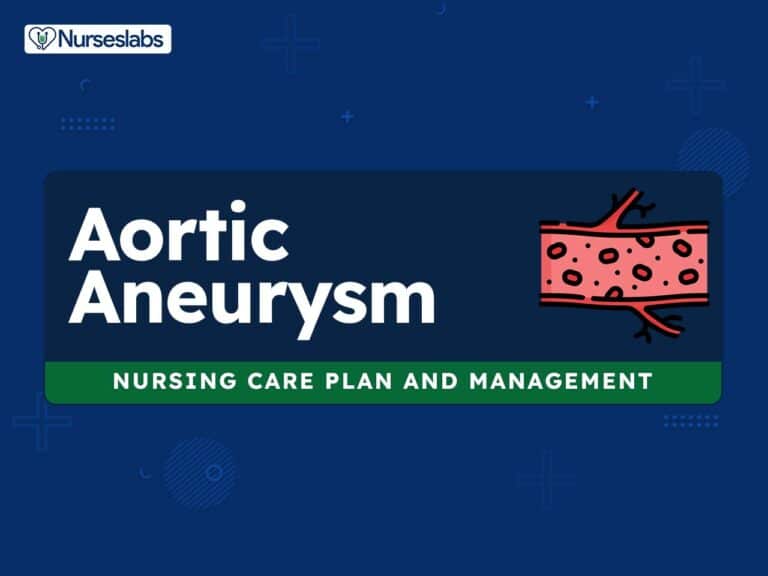
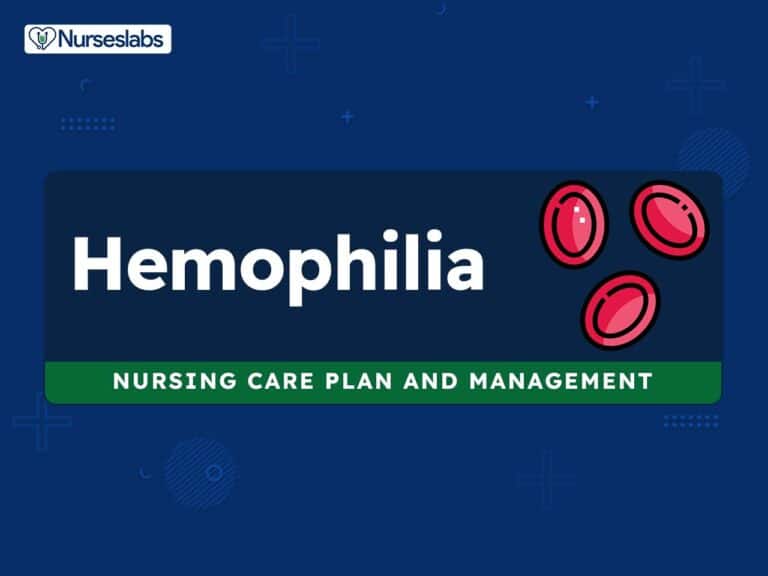


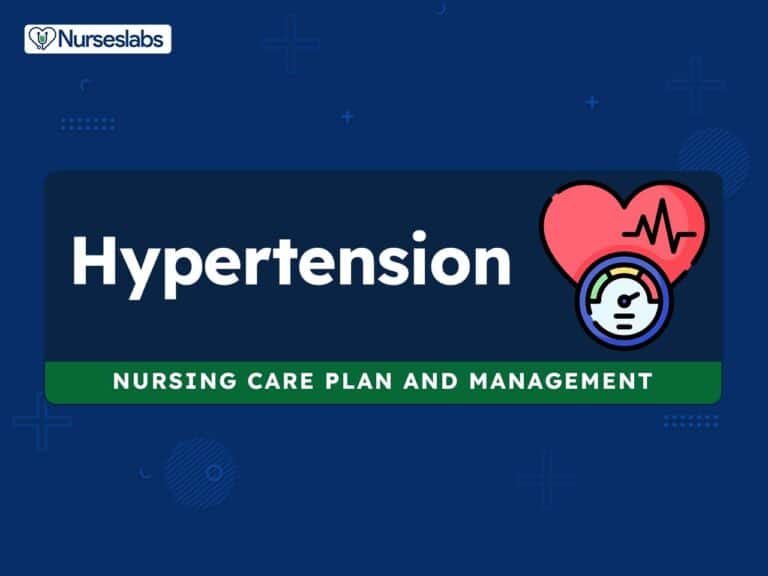

Leave a Comment